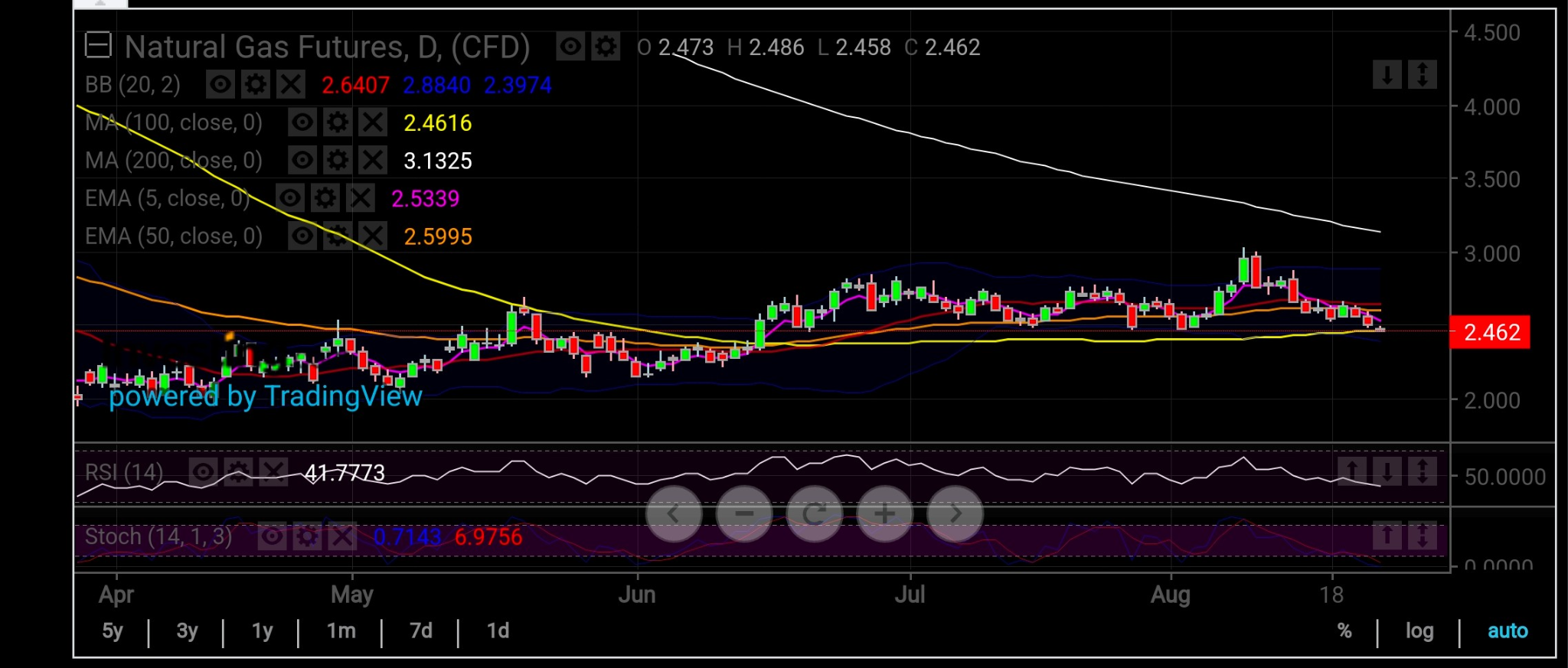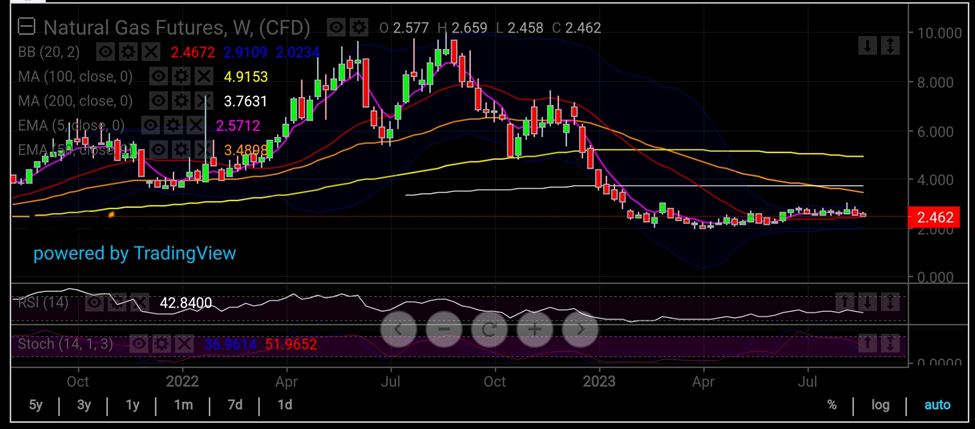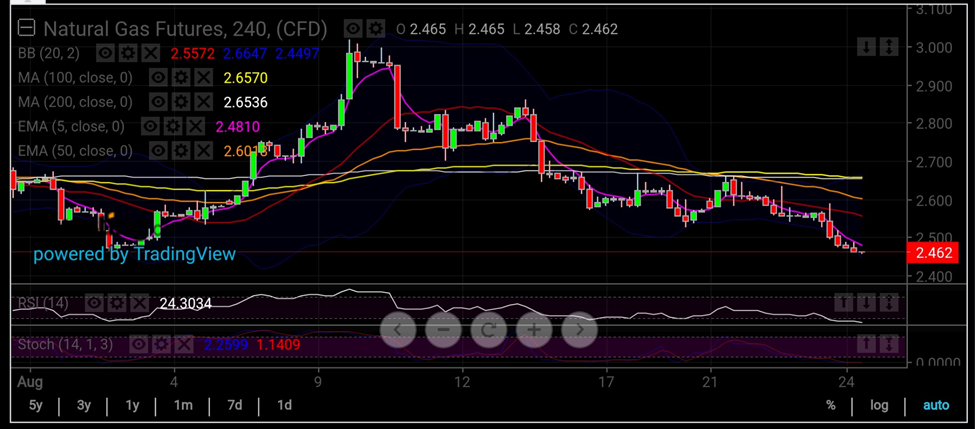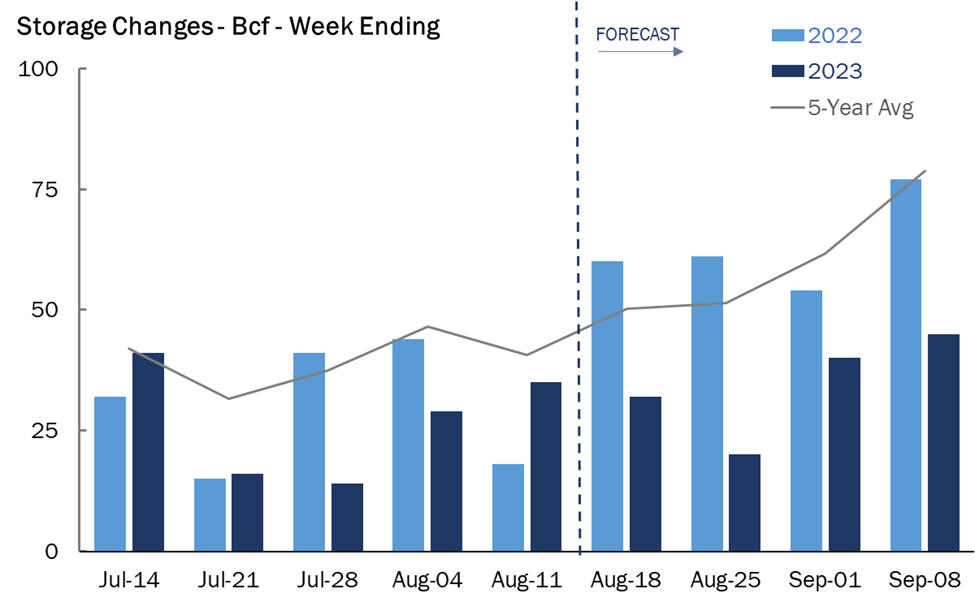- Summer heat isn’t giving up, not even in late August
- That could keep air-conditioning demand, power burns up next four to six weeks
- Hurricane season is also here, with potential for more storms in the Gulf of Mexico
- Storms can strike power grids, gas pipelines, causing widespread power outages
Mother Nature is playing a double game with the natural gas market. The question is, which one will win?
On one end, the summer heat isn’t giving up, not even in late August amid the approach of the Sept 4 Labor Day holiday that unofficially ushers in the fall season. That could keep air-conditioning demand and — most importantly — power burns up over the next four to six weeks.
On the other side, the Atlantic hurricane season is already here, with the potential for more storms to emerge in the warm waters of the Gulf of Mexico. Those could severely cancel out higher temperatures across the Lower 48 States that depend on gas as the primary energy feedstock for cooling.
Also, hurricanes can cause widespread power outages as devastating winds and floods strike at the heart of power grids and gas pipelines.
Eli Rubin of EBW Analytics succinctly captured the duopolistic nature of the market drivers for gas in the near term when he noted that traders would have to beware of the risks/rewards of both, with perhaps a little more bias towards the storms.
In comments carried by naturalgasintel.com, he adds:
“While the near-term tropical forecast appears relatively benign with the majority of storms spinning out to sea, it only takes one major landfalling hurricane to reset the natural gas market trajectory.”
“Risks will remain elevated over the next 30-45 days before retreating modestly into October.”

Charts by SKCharting.com, with data powered by Investing.com
Gas futures on the New York Mercantile Exchange’s Henry Hub remained below the key $2.50 mark, heading for a mid-week decline of about 3% that extended last week’s 8% slump, as the threat of another tropical disturbance kept traders on guard despite the ongoing heatwave over the Lower 48.

Price-wise, gas futures have technically landed on a horizontal support zone statically aligned with the 100-day Simple Moving Average, or SMA, of $2.46, and could even test $2 support without an appropriate pullback, said Sunil Kumar Dixit, chief technical strategist at SKCharting.com.

Dixit added:
“The current bearish price action urges caution as the Daily Stochastics reach oversold conditions calling for a bounce back from the lows.”
“Failure to meet rebound conditions will increase chances of a break below $2.46 triggering correction extending towards $2.25 and $2.00 over the mid term.”
On the upside, he said, recovery will require reclaiming the 50-day EMA of $2.60, followed by a day/week close above the daily Middle Bollinger Band of $2.65.
Back to the fundamentals of the market, the American weather model GFS, or Global Forecast System, trended a little hotter on Tuesday, resulting in additional CCDs, or cooling degree days, in the overnight run.
CDDs, which are used to estimate demand to cool homes and businesses, measure the number of degrees a day's average temperature is above 65 Fahrenheit (18 Celsius).
Despite the spike in heat, the risks of tropical storms hitting the Lower 48 were still a key focal point for the market, naturalgasintel said in a blog.
It noted that Tropical Storm Harold gave Texas its first dose of the potential impacts a storm could have on gas demand. The storm was mostly a wind and rain event for the drought-stricken region, but it lowered temperatures and cooling loads, at least for a day.
Tropical Storm Franklin, meanwhile, was on track to move across Hispaniola through Thursday. But its forecast track has the system moving eastward through the Atlantic thereafter and away from the Lower 48.
In the densely-populated South Central region, traders are aware of not only the reduced demand stemming from milder temperatures but also the possibility of widespread power outages.
For context, last year’s Hurricane Ian significantly curbed demand in the Southeast as about one million Florida customers lost power. North and South Carolina, Virginia, and Georgia also were impacted.
In 2021, Hurricane Ida temporarily shuttered gas supplies from the Gulf of Mexico for weeks, while Hurricane Laura shut down the Cameron LNG facility for more than a month in 2020.
NatGasWeather said the midday GFS model run on Wednesday was a little hotter for late this weekend and next week, adding a modest 3 CDDs. However, it was cooler for the Aug. 30-Sept. 2 period, which notably precedes an expected dip in demand over the Labor Day holiday weekend.
Importantly, the European Center for Medium-Range Weather Forecasts, or ECMWF, was 5 CDDs cooler than the GFS.
As such, NatGasWeathern said, “the natural gas markets won’t bite on hotter trends in the GFS model” unless the European data were to trend hotter to match it.
“For now, the first week of September is likely to be viewed as hot enough,” the firm said.

Ahead of the weekly update on U.S. natural gas in storage by the Energy Information Administration, or EIA, industry analysts tracked by Investing.com predicted a build of 33 bcf versus last week’s gain of 35 bcf.
It would also be lower than 54 bcf injection from a year ago and the 5-year average build of 49 bcf.
The forecast for the week ended Aug. 18 would lift gas in storage to 3.098 trillion cubic feet, or tcf — about 22% above the same week a year ago and 11% above the five-year average.
With no tropical threats in the near term, NatGasWeather said the net result of recent and coming weather patterns is for storage surpluses to five-year average slowly but gradually tightening from 299 to 225-200 billion cubic feet or bcf.
Rhett Milne of NatgasWeather.com particularly says that the next two EIA reports were expected to print builds slightly smaller than five-year averages to further decrease surpluses to near +265 bcf.
If late-season heat continues in September, surpluses are likely to be reduced toward +225-200 bcf, Milne said, adding that this could also be accomplished through lighter production or stronger exports of LNG or liquefied natural gas.
Natural gas deliveries to LNG export facilities averaged 12.8 bcf per day last week, which was 1.3 Bcf/d higher than the previous week.
Mobius Risk Group says that an early look at storage data for last week shows a divergence between a sample of facilities reporting daily versus weekly. The research group said in a forecast:
“Our daily sample was materially lower week-over-week, with a total closer to the Aug. 3 storage week than the Aug. 10 storage week.”
“In isolation, this would imply the EIA number this Thursday could fall below the 30-bcf mark. However, weekly data was higher week-over-week, and considering last Thursday’s injection was 35 bcf, this would place a 40-bcf build on the table.”
Regardless, an increase of 30 to 40 bcf in storage this Thursday would confirm the trend of weather-adjusted tightness and reduce the storage surplus versus last year.
Mobius adds:
“From our perspective there appears to be greater odds of a sub 30 bcf build than a build higher than 40 bcf.”
***
Disclaimer: The aim of this article is purely to inform and does not in any way represent an inducement or recommendation to buy or sell any commodity or its related securities. The author Barani Krishnan does not hold a position in the commodities and securities he writes about. He typically uses a range of views outside his own to bring diversity to his analysis of any market. For neutrality, he sometimes presents contrarian views and market variables.
